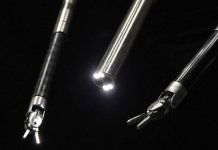
In a world buzzing with gadgets and gizmos, from smart food packaging to health-monitoring bandages, the need for environment-friendly electronics is more pressing than ever.
Imagine if we could just let these devices break down naturally once we’re done with them, rather than worrying about their impact on the planet.
Well, a recent breakthrough at Binghamton University is bringing us closer to that reality, thanks to the innovative work on ‘papertronics’ by Professor Seokheun “Sean” Choi and his team.
Professor Choi, a dedicated researcher at the Thomas J. Watson College of Engineering and Applied Science, has been on a quest to solve a major hurdle in using paper for electronics.
Paper, as we know it, is great for writing or soaking up liquids due to its rough and porous nature.
But when it comes to making circuits, these features make things tricky. Electronics prefer smooth and solid grounds, and paper’s texture was proving to be a stumbling block.
The traditional approach to creating paper-based electronics involved sticking components onto laminated paper. This method did keep the paper’s flexible charm but didn’t really explore the full potential of what paper could offer to electronics.
Professor Choi, alongside his Ph.D. students Zahra Rafiee and Anwar Elhadad, has made a game-changing move. They’ve figured out how to use paper’s natural properties to their advantage.
By using special inks that flow through the paper using capillary action (the same way water moves up a plant’s roots) and designing patterns with hydrophobic (water-repelling) wax, they’ve crafted circuits directly within the paper itself.
This method allows them to create resistors, capacitors, and transistors that are not just part of the paper but can be tuned to specific needs, a big leap forward from their earlier versions.
The result? Paper circuits that can be folded, stacked, and are completely biodegradable. These aren’t just any circuits; they’re the future of electronics, offering a greener, more sustainable way to keep our world connected.
While Professor Choi and his team have made significant strides, they’re already eyeing further improvements.
They’re exploring how to protect these delicate paper devices for long-term use and expanding their repertoire to include more electronic components.
Their work promises a future where electronics can return to the earth as easily as they came into our hands, marking a major step toward sustainability in our increasingly digital world.



